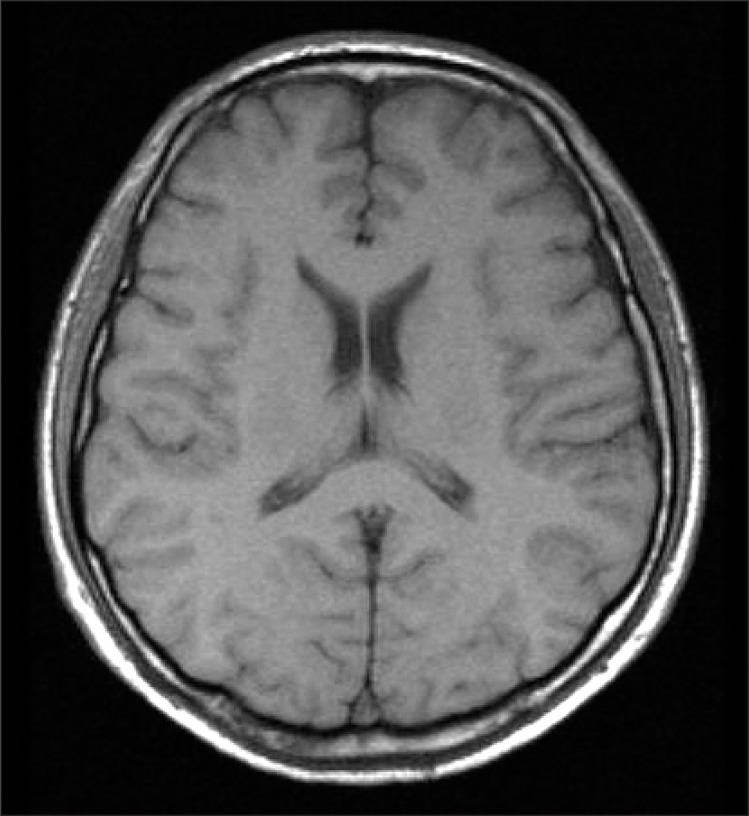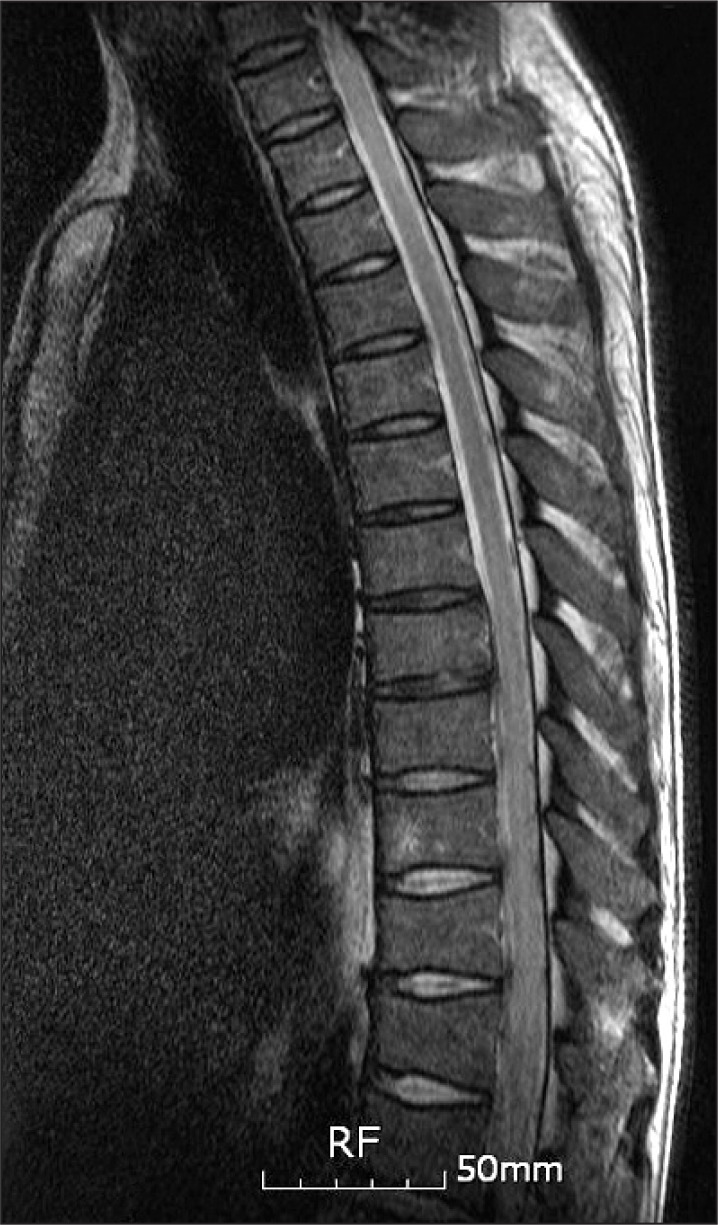Ann Rehabil Med.
2012 Dec;36(6):871-875.
Delayed Onset of Thoracic SCIWORA in Adults
- Affiliations
-
- 1Department of Physical Medicine and Rehabilitation, Konyang University College of Medicine, Daejeon 371-718, Korea. eutravel@kyuh.ac.kr
Abstract
- Spinal cord injury (SCI) without radiographic abnormality (SCIWORA) is estimated to account for 1-9% of the occurrence of SCI. Of these, cervical SCIWORA in children is common, but thoracic SCIWORA delayed onset in adult is much less common. We experienced a case of 38-years old male patient with lower extremity weakness; he had fallen down a week earlier before the investigation. At the time of admission, motor grade was 4 with voiding incontinence and ambulated with cane. He presented progressive weakness from G4 to G3 and hypoesthesia was below T8 dermatome and ambulated with wheelchair. Whole spine and lumbar MRI findings showed no abnormality and electrodiagnostic findings showed normal NCS, however, abnormal SEP on both the tibial nerves. After steroid therapy and proper rehabilitation program for 2 weeks, lower extremity strength was improved from G4 to G3, voiding was continent, and ambulation reached cane gait.
Keyword
MeSH Terms
Figure
Reference
-
1. Pang D, Wilberger JE Jr. Spinal cord injury without radiographic anbormalities in children. J Neurosurg. 1982; 57:114–129. PMID: 7086488.2. Pang D, Pollack IF. Spinal cord injury without radiographic abnormality in children- the SCIWORA syndrome. J Trauma. 1989; 29:654–664. PMID: 2724383.3. Singh AP, Bharati S, Ahmed S, Mishra L, Singh DK. Spinal cord injury without radiographic abnormality. Indian J Crit Care Med. 2006; 10:187–190.4. Winn HR. Youmans neurological surgery. 2004. 5th ed. Philadelphia: Saunders;p. 3518–3526.5. Burke DC. Traumatic spinal paralysis in children. Paraplegia. 1974; 11:268–276. PMID: 4827225.
Article6. Kim YD, Park HK, Chang JC, Choi SK. Thoracic spinal cord injury without radiographic abnormality following minor trauma in adults. J Korean Neurosurg Soc. 2004; 36:405–407.7. Frankel HL, Hancock DO, Hyslop G, Melzak J, Michaelis LS, Ungar GH, Vernon JD, Walsh JJ. The value of postual reduction in the initial management of closed injuries of the spine with paraplegia and tetraplegia. I. Paraplegia. 1969; 7:179–192. PMID: 5360915.
- Full Text Links
- Actions
-
Cited
- CITED
-
- Close
- Share
- Similar articles
-
- Pediatric Cervical Spine Injuries and SCIWORA: WFNS Spine Committee Recommendations
- Delayed-onset focal dystonia after stroke
- The Role of MRI in Spinal Cord Injury Without Radiographic Abnormality
- A Case of Traumatic Cardiac Arrest due to SCIWORA (Spinal Cord Injury without Radiographic Abnormality)
- A Case of Spinal Cord Injury without Radiographic Abnormality




